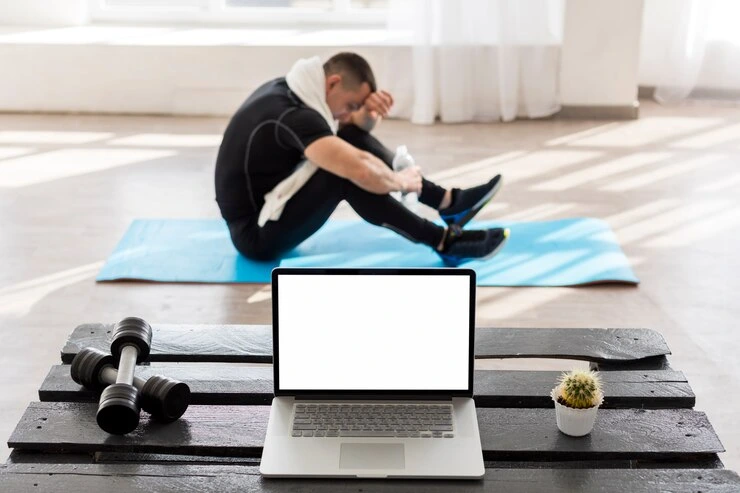In today’s fast-paced world, maintaining an active lifestyle can feel like an uphill battle, especially when you’re juggling work, family, and personal commitments. However, staying active is essential for both physical and mental well-being. Regular exercise can boost your energy, reduce stress, improve mood, and contribute to long-term health. If you struggle to find time for fitness due to a packed schedule, fear not! Here are some practical tips to help you stay active even when your calendar is full.
1. Incorporate Short, High-Intensity Workouts
One of the most effective ways to stay active when time is limited is by opting for short, high-intensity workouts. High-Intensity Interval Training (HIIT) allows you to get an intense workout in as little as 20-30 minutes. These exercises alternate between intense bursts of activity and short periods of rest, which can help improve cardiovascular fitness, burn calories, and increase metabolism.
Why it works: HIIT workouts can be completed in less time than traditional workouts but provide similar benefits. This makes it easier to fit fitness into a busy schedule without sacrificing the quality of your workout.
Example: A 20-minute HIIT routine could include jumping jacks, push-ups, squats, and sprints, each for 45 seconds followed by 15 seconds of rest.
2. Use Your Commute for Activity
If you commute to work or run errands, you can turn this otherwise sedentary time into an opportunity for physical activity. Walking or biking to work can help you build daily movement into your routine. If walking or cycling isn’t an option, consider parking farther away from your destination to increase your steps. Alternatively, try taking the stairs instead of the elevator whenever possible.
Why it works: These small, consistent changes throughout your day can add up and help you stay active without requiring extra time.
3. Incorporate Movement into Your Workday

Long office hours can leave you feeling drained, but taking short breaks to stretch or walk around can prevent stiffness and improve focus. Set an alarm to remind yourself to move every hour. Even just a 5-minute walk around the office, or standing and stretching for a minute, can counteract the negative effects of prolonged sitting.
Why it works: Movement increases blood circulation and energy levels, helping you stay productive throughout the day. It can also reduce the risk of musculoskeletal problems caused by sitting too long.
Tip: You could do quick stretches at your desk, such as seated leg raises or shoulder rolls, to keep your body from stiffening.
4. Join a Fitness Class with a Set Schedule
When your schedule is unpredictable, it can be challenging to stay motivated to work out. Joining a fitness class can help establish a routine, and knowing that you have a set time to attend a class can keep you committed. Look for classes that fit into your schedule, such as early morning yoga, lunchtime spin classes, or evening boot camps.
Why it works: Having a pre-scheduled workout can make it easier to fit exercise into your day. Plus, the social aspect of group classes can keep you motivated and hold you accountable.
Tip: Many gyms and fitness studios offer virtual classes, which can be convenient if you’re unable to attend in person.
5. Get Active with Family and Friends

Family time and social engagements don’t have to be sedentary. Plan active outings such as hikes, bike rides, or playing a sport together. It’s a fun way to stay active while also bonding with your loved ones. If you’re pressed for time, even a 15-minute walk around the neighborhood after dinner can be a great way to get moving.
Why it works: Combining exercise with social activities helps you maintain relationships while also prioritizing physical activity.
6. Prioritize Strength Training
Strength training doesn’t have to take up hours in the gym. A quick 20-minute strength workout using bodyweight exercises, such as squats, lunges, push-ups, or planks, can have a powerful impact on your fitness. You can do these exercises in your living room, while watching TV, or even during a break at work.
Why it works: Strength training helps build muscle mass, boost metabolism, and prevent the loss of bone density. These exercises don’t require a lot of time but offer tremendous benefits.
Tip: You can perform a circuit of bodyweight exercises that target multiple muscle groups for a full-body workout.
7. Take Advantage of Quick Home Workouts

If your schedule doesn’t allow for a trip to the gym, create a small home workout routine. There are countless online workout programs that can guide you through everything from yoga and Pilates to cardio and strength training—all in the comfort of your own home.
Why it works: Home workouts eliminate the need for a gym membership or commute. Plus, you can do them on your own time, which is perfect for those with busy schedules.
Tip: Apps and YouTube channels offer free and paid workout programs for all fitness levels.
8. Set Realistic Goals
Setting fitness goals can keep you motivated and help you stay on track. However, it’s essential to set realistic, achievable goals that fit within your busy lifestyle. Start with small goals, such as exercising 3 times per week for 30 minutes, and gradually increase your activity level as you have more time.
Why it works: Setting achievable goals helps you stay focused and prevents feelings of frustration or burnout.
9. Incorporate Movement into Household Chores
Household chores don’t just keep your living space clean—they can also serve as an excellent form of physical activity. Vacuuming, sweeping, mopping, and gardening are all great ways to get moving. Consider using cleaning as an opportunity to increase your heart rate, making these tasks feel like a mini-workout.
Why it works: You’re already doing the work, so why not make it more effective by adding some movement into it? It’s a simple way to stay active without setting aside additional time.
10. Mind Your Nutrition
While exercise is a crucial part of staying active, it’s also important to fuel your body properly. Eating balanced, nutritious meals can increase your energy levels, helping you power through your day and stay active. Focus on eating whole foods, such as fruits, vegetables, lean proteins, and healthy fats.
Why it works: Proper nutrition supports your physical activity levels and overall well-being, ensuring you have the energy needed to stay active throughout the day.



